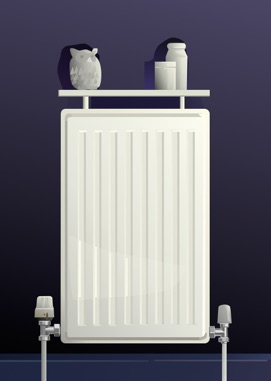CENTRAL HEATING
Having a warm home when you wake up on the coldest of days is a luxury that a lot of people now take for granted. Having to gather fuel or stoke the fire has been forgotten. However, many 70 year olds will remember houses that were cold and uncomfortable and fires that needed constant care. It wasn’t until the 1950/60’s that cheaper boilers, welded radiators and easily joined copper piping made central heating widely available to the public at large.
HISTORY
Early hot water systems were used in Russia for central heating of the Summer Palace from 1710–14. These used low pressure water, which required very large pipes. One of the first modern hot water central heating systems to remedy this were installed by Angier Perkins in London. His 1832 system distributed water at 200 o C through small diameter pipes with threaded joints to withstand the high pressure.
Franz Galli, a businessman living is St Petersburg, received a patent for a radiator in 1857. However, he was apparently one of many people working in the area and an American Joseph Nason had previously developed a primitive radiator in 1841 and received a number of U.S. patents for hot water and steam heating systems. Who ever was first, the Victorian cast iron radiator became widespread by the end of the 19th century and was a major step in the shaping of modern central heating.
In the 20th century, design practice moved away from cast iron boilers and radiators towards the use of steel with welded construction which uses less labour and is cheaper to manufacture.
MAKING
Two steel sheets are press formed between hardened steel formers to create the outer panel of the radiator. These are welded around the edges to seal the two skins leaving space inside for the hot water to circulate. These panels have folded sheet fins tack welded to the rear to increase the hot surfaces in contact with the circulating air. Mouldings are welded into the panel at either corner ready to take the flow and return fittings as the bleed ands ventilating screws.
DRAWING THE RADIATOR
The indented panel catches the light in subtle ways across its surface. It is easy to see the leading edges catching the light whilst trailing ones are cast into shadow. A section receives a cast band of reflected light whilst the shiny fittings contrast bright highlights with adjacent dark bands.
To order a print
click here to go to the PRINTS page.


OVERLOOKED
THINGS










